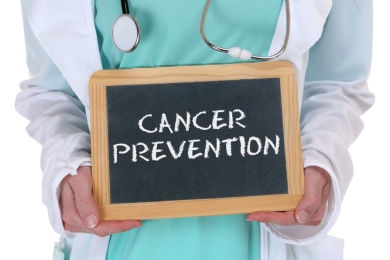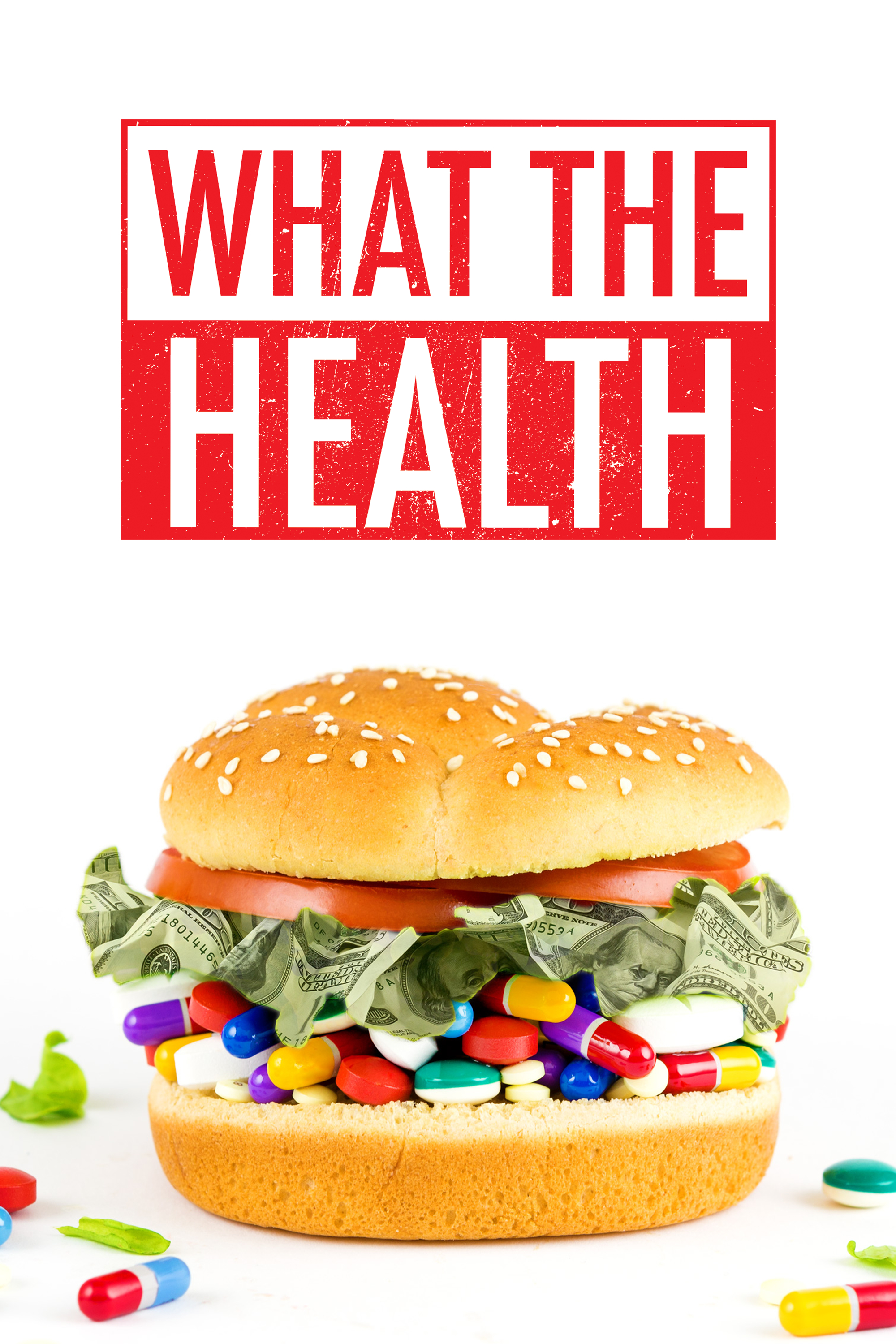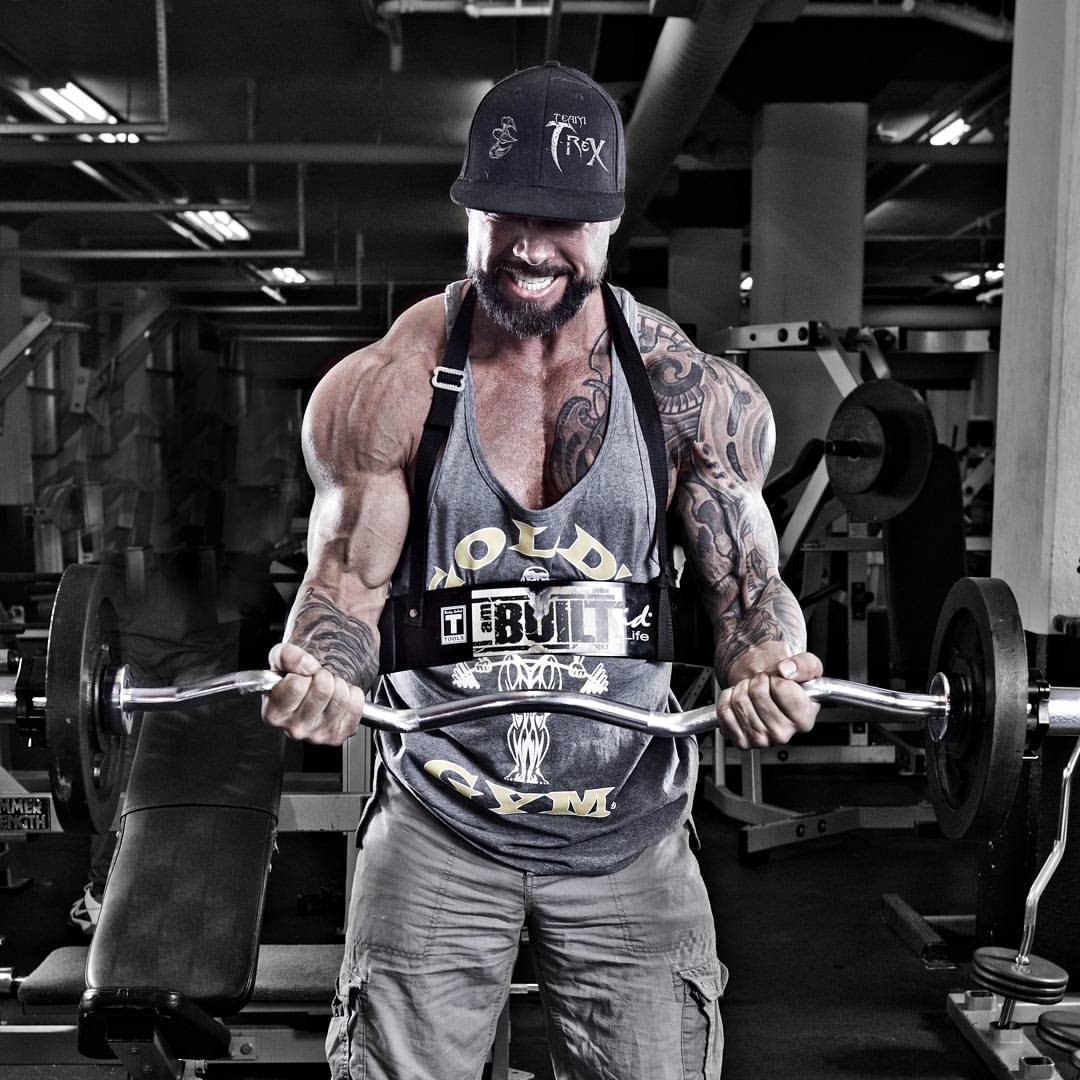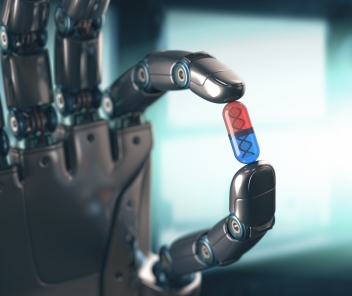Infoway Selects TELUS Health for PrescribeIT™
TORONTO, May 11, 2017 /CNW/ - Canada Health Infoway (Infoway) is pleased to announce that it has selected TELUS Health as the successful bidder for the technical solution provider for PrescribeIT™, Canada's e-prescribing service.
"TELUS Health proposed an innovative approach that together with their advanced capabilities and capacity to deliver on our vision make them an ideal choice for PrescribeIT™," commented Michael Green, President and CEO, Canada Health Infoway.
"As a longstanding technology provider enabling improved health outcomes for Canadians, we are proud to be working with Infoway to develop and operate PrescribeIT. PrescribeIT will be built on our open, interoperable and vendor agnostic TELUS Health Exchange platform, which is already enabling collaboration and efficiency in the primary care ecosystem," said Paul Lepage, President of TELUS Health. "We look forward to advancing this service in support of driving better health outcomes for Canadians and helping to bring PrescribeIT to patients as soon as possible."
Infoway's experienced management team, together with TELUS Health will serve the interest of all Canadians, prescribers, pharmacists and pharmacies by ensuring patient choice of pharmacy, safeguarding patient data and upholding privacy and security standards while optimizing existing investments in provincial drug information systems.
"PrescribeIT™ will greatly aid policy makers and health care providers alike in the struggle against opioid misuse," noted Green. "Through a single, national e-prescribing system, we can reduce fraud and abuse by eliminating handwritten prescriptions, avoid fragmentation of patient health care information, and ensure data integrity for opioid monitoring and surveillance."
The PrescribeIT™ team is currently preparing for trial runs of PrescribeIT™ in select communities in Alberta and Ontario starting in mid-2017 in preparation for a full-scale rollout across the country starting in mid-2018. For more information on PrescribeIT™ please visit www.infoway-inforoute.ca/PrescribeIT. For more information on TELUS Health, please visit www.telushealth.co.
About Canada Health Infoway
Infoway helps to improve the health of Canadians by working with partners to accelerate the development, adoption and effective use of digital health across Canada. Through our investments, we help deliver better quality and access to care and more efficient delivery of health services for patients and clinicians. Infoway is an independent, not-for-profit organization funded by the federal government.
SOURCE Canada Health Infoway
Hyperloop, smart homes, a personal helicopter, wearable technology, healthtech and cleantech among the many head-turning innovations at Discovery 2017
TORONTO, May 9, 2017 /CNW/ - Ontario Centres of Excellence's (OCE's) award-winning Discovery conference returns to the Metro Toronto Convention Centre, South Building on May 15-16. The hotly anticipated annual event is celebrating 12 years of bold, new ideas with a dynamic showcase of the best Ontario and Canadian innovators have to offer.
Discovery's 200,000-square-foot show floor is packed with made-in-Ontario exhibits, exciting and informative panels and interactive sessions. Featured this year among the more than 500 exhibits are some of the latest developments in next-generation transportation including a Hyperloop Zone with virtual reality simulations and a levitation pod from Waterloop, smart cars from Tesla and General Motors featuring AI integration, an ultramodern smart home, a cutting-edge aerospace zone with a personal helicopter prototype from Airvinci, robotics, healthtech, biometrics, wearable tech including biosensor clothing, and augmented reality demonstrations.
"Over the past decade OCE's Discovery has brought some of the most exciting speakers, entrepreneurs and global thought leaders from Ontario and around the globe to our two-day celebration of the innovation ecosystem," says Dr. Tom Corr, President and CEO of OCE. "Discovery brings together industry, academia, investors, government, students, young entrepreneurs and more to share ideas, network, invest and create business relationships that drive Ontario's economic growth and global competitiveness."
"Our government recognizes that innovations like the ones unveiled at OCE Discovery create the jobs and technologies that will fuel our economy now and in the future," says Brad Duguid, Minister of Economic Development and Growth. "We are pleased to support these next-generation ideas that will boost Ontario's competitive advantage in a fierce and fast-changing global economy and maintain our position at the leading edge of technological innovation."
Named Canada's Best Trade Show in 2010, 2011, and 2016, OCE's Discovery is Canada's premier innovation showcase. It brings together the best and brightest minds in industry, academia, investment and government to showcase leading-edge technologies, best practices and research in the areas of energy, fintech, cleantech, advanced health, digital media, information and communication technologies and advanced manufacturing. The annual conference and trade show attracts more than 3,500 attendees and 500 exhibitors.
"Discovery is a showcase for the kind of game-changing technologies that improve our lives and drive Ontario's knowledge-based economy," says Reza Moridi, Minister of Research, Innovation and Science. "As part of our government's Ontario Network of Entrepreneurs, we are proud to support OCE Discovery in advancing these cutting-edge collaborations at every stage of their development."
Discovery will feature two main-stage keynote speakers:
On May 15, Jared Cohen, founder of Google Ideas and President of Jigsaw will speaking from the main stage about the new digital age from his unique vantage point at the centre of technology and how it is changing the world, especially for the 5 billion people expected to come online in the next decade.
On May 16, Gina McCarthy will deliver an environmental message on both the mainstage and in the Discovery Theatre that conveys common sense strategies and sustainable solutions backed by science. McCarthy is well-known and celebrated for her work with the Obama White House as former head of the Environmental Protection Agency (EPA).
Discovery also welcomes Marc Goodman, New York Times best-selling author, founder of the Future Crimes Institute, and global strategist as a featured presenter on the panel Lessons in Innovation from the Criminal Underground and the Future of Financial Crimes.
OCE is also excited to feature panels with some of Canada's leading entrepreneurs at Discovery 2017 including;
- Technology of the Future
- Seizing Opportunity in China
- Future of Ontario's Health System: Driving Value and Impact
- Next-Generation Transportation
- Scale-Ups: How Ontario Entrepreneurs are Scaling Up and Attracting International Attention
A networking bonanza, Discovery provides students, job seekers, young entrepreneurs and start-ups seeking investment and an array of opportunities to interact with experts, investors, potential collaborators and employers.
This includes:
Meet An Investor, where attendees can meet one-on-one with expert investors, entrepreneurs, innovation agents, and professional services and export specialists.
Discovery's Book a Meeting feature, which attendees can use to message and book timeslots to meet before, during or after Discovery with other attendees, exhibitors, and investors on the show floor.
The B2B and B2G Zones. In keeping with the aim of making Discovery a place to do business, the conference will also facilitate meetings between large corporations and start-ups and scale-ups through its B2B Zone, and meetings between businesses and government through the new B2G Zone.
Discovery will also highlight:
Ontario-based companies showcasing their accessibility-focused innovations in the Accessibility Innovation Showcase on the Discovery show floor in partnership with Ontario's Ministry of Economic Development and Growth.
Ontario-based companies exhibiting social innovations in the Social Enterprise Zone.
Now a crowd-pleasing favourite, Discovery 2017 will also hold four pitch competitions featuring some of Ontario's brightest entrepreneurs from across the province:
- Young Entrepreneurs, Make Your Pitch for high-school students
- Accessibility Innovation Tech Pitch Competition
- Social Enterprise Pitch Competition
- ONtrepreneurs Pitch Challenge presented by the Ontario Brain Institute
Discovery continues to promote the exchange of ideas and encourage new ways to collaborate and push the boundaries of research and innovation through to demonstration and development. With so many thought leaders in one place, attending Discovery is a great way to explore Ontario's bright future in the global innovation ecosystem.
For more on Discovery, visit www.ocediscovery.com
Billion-dollar Growth Opportunities in Cancer Testing Market: How Will Collaborative Partnerships Drive Better Health Outcomes?
Cancer is the second major cause of death in the United States (U.S.). Every year, cancer claims the lives of more than half a million Americans. Frost & Sullivan has been researching how new technology advancement in next generation sequencing (NGS), proteomics and liquid biopsy will fuel growth in cancer screening, prognosis and therapy monitoring markets.
Our research on U.S. Oncology Diagnostics Market explores the growth opportunities; challenges in molecular and non-molecular technology segments across five different cancers namely breast cancer, ovarian cancer, cervical cancer, colorectal cancer, prostate cancer and lung cancer. The 2016 U.S. cancer diagnostics market is valued at $1.1 billion out of a market potential of $21.6 billion. If the full market potential is exploited, the annual revenue could grow to $25 billion by 2021.
 |
Clinicians have endorsed that screening at early detection, and therapy selection and monitoring are the short term promising applications of liquid biopsies, a non-invasive way of measuring biomarkers that can eliminate the need for biopsies where often the go-to site is a big concern. “Several diagnostic companies are expanding their product portfolio to include liquid biopsy and companion diagnostics in their long term strategy, Prominent pharmaceutical companies such as Merck, Bristol-Myers Squibb and Johnson & Johnson’s and their respective venture capital arm are investing heavily in liquid biopsy start ups," explains Transformational Health Principal Analyst Divyaa Ravishankar.As a result, convergence and collaboration between pharmaceutical and diagnostic companies are meant to grow significantly. With private insurance payers now covering the cost for new cancer assays that have a demonstrable economic advantage to the health continuum; the insurance market segment will continue to move to the value based reimbursement model. For this reason, many novel assays have proven to deliver cost-effective solutions to improve patient outcomes at a better healthcare economic cost. “Marketing strategies for companies such as 23andme and Provista Diagnostics receive a particular mention because they are advertising directly to consumers who in turn ask physicians to get tested with a particular company. This puts the patient as a key decision maker in the cancer care ecosystem,” adds Ravishankar.
In addition, genomics technologies are increasingly being used to understand genetic changes associated with cancer progression. The trend is supported by increasing focus on preventive and personalized healthcare approaches from healthcare providers and payers. Further, lowering cost of genome sequencing and advancements in clinical interpretation capabilities of NGS data have supported the rise of this trend. “While a number of NGS informatics companies have already made significant investments to develop focused capabilities for NGS-based oncology diagnostics assays and therapies, there are still ample opportunities in this market, especially in the clinical interpretation and reporting segment,” concludes Piyush Bansal, Transformational Health Senior Industry Analyst.
The current U.S. NGS informatics market in genomic testing companies segment is expected to grow at a Compound Annual Growth Rate (CAGR) of 18% during 2016-2021. Subject to some positive regulatory and technology developments, the molecular diagnostics customer segment can offer more than $150 million in revenue to the NGS informatics industry, out of which a significant part of the revenue will be contributed by oncology diagnostics tests and assays. Also, the analysis predicts a strong growth of NGS informatics solutions in pharmaceutical and biopharmaceutical customer segment, as biopharma companies will look to increase their spend on disease research using NGS.
Ten Tips for Effective Communication With Your Doctor
By Dr. Karen Trollope-Kumar
Sometimes my work as a family doctor the days don’t always go as expected. On a busy day, I feel like I’ll never catch up, and it’s frustrating that I can’t give adequate time to each individual patient. One afternoon not long ago, I was feeling unusually tired. I looked down at my schedule and saw that my last patient was Beth, a young mother with a seven-year-old son. I thought to myself – Let’s hope this one is just a simple sore throat!
“So what brings you in today?” I asked, after a brief greeting.
“Well, I’m worried about Jimmy”, said Beth anxiously. “He’s getting into trouble at school a lot, and his teachers say he’s not paying attention. Sometimes he has stomachaches. I’m not sure what to do… Also, I’m wondering if you could just check his foot, I think he’s developed a plantar wart.”
I couldn’t help letting out a sigh. “Well, let’s just focus on the main problem,” I say. “What more information can you give me? Have you got his latest report card? Any specific comments from the teacher?”
Beth shook her head. She tried to explain more about her concerns about Jimmy, but she sensed that I was not listening closely, and she tripped over her words. Finally, I said in a voice edged with irritation, “There’s not much I can do in this short appointment. This is a complicated issue. Can you re-book for another time?”
After Beth and Jimmy left the office, I felt very guilty for brushing her off that way. I knew that she was not happy with the appointment, and neither was I. We had a communication problem, aggravated by time constraints. Unfortunately, such problems are all too common between family doctors and their patients and with a little teamwork can get the critical doctor-patient relationship back on track.
Like any healthy relationship, good communication is fundamental and that applies to the doctor-patient relationship as well. When that vital link of understanding is broken between doctor and patient, a cascade of negative consequences can result. If the patient hasn’t been able to fully explain his or her symptoms, an incorrect diagnosis might be made. If the doctor hasn’t clearly communicated his or her assessment of the problem, the treatment plan might fail. Poor communication inevitably leads to dissatisfaction for both doctor and patient.
There are ten quick tips to communicate better with your family doctor, and to make your office visit more effective:
1. If you are seeing the doctor for a complicated issue (like Jimmy’s problem) ask the receptionist to book you a longer appointment.
2. Prepare what you’re going to say ahead of time, and keep it concise and focused.
3. If you’ve done some research on the Internet about your problem and want to share it with your doctor, make sure you use reputable sites to get that information. Doctors get frustrated when patients bring in reams of information of dubious value.
4. Avoid coming into the doctor’s office with a list of unrelated problems – focus on your main concern for that visit.
5. If you are going in to get results of an important test, bring a friend or relative with you. Sometimes it can be hard to remember what the doctor has said, especially when the topic is emotionally laden.
6. If you have a particular worry about a symptom (for example, Could this be cancer?), express that concern to the doctor.
7. If the doctor advises a treatment you don’t feel comfortable with, explain your reasons, and see if an alternative approach would be possible.
8. Keep your follow up appointment, and at that time let the doctor know how well (or not) the treatment has worked.
9. If you’re not happy with the service you’re getting, communicate this clearly but politely, using “I” statements. (for example, “I feel concerned about how long it took to receive these test results.”)
10. If you’re happy with the service you’re getting from your doctor, a word of thanks or a card is always appreciated. Doctors are human too!
Improving communication requires work on the part of both the doctor and the patient. Thinking back on this appointment with Beth and Jimmy, I realized my faults: I was tired and also frustrated because the issue was complex and difficult to address during a short appointment. Yet still, I could have done a better job at communicating with compassion. On Beth’s part, she could have prepared for this appointment by thinking ahead about what information might be useful for the doctor. Working together, patients and family doctors can form great partnerships if they keep communication at the forefront of their relationship.
Dr. Karen Trollope-Kumar is a family physician in Canada and author of Cloud Messenger: Love and Loss in the Indian Himalayas. For more information, please visit www.karentrollopekumar.com.
Getting Outside is Good for You: Five Benefits

Spring is here and families will spend more time outside dining, playing, relaxing, and gardening as the weather improves. And while they may enjoy being outside, they may not know that getting outside is also good for their health. The Outdoor Power Equipment Institute (OPEI) outlines five health benefits of getting outside:
Reason #1: Your lawn can make you happier! Our stress levels fall within minutes of seeing green spaces. Knowing and experiencing nature makes us generally happier, healthier people.
Reason #2: Getting dirty is good for you! Mycobacterium vaccae in soil mirrors the effect on neurons that Prozac provides. Give your kids a pair of gardening gloves and have them work with you in your green spaces for a hefty dose of Vitamin N(ature) and G(reen). People who spend time gardening and have direct contact with soil feel more relaxed and happier.
Reason #3: Exposure to natural settings may be widely effective in reducing attention deficit/hyperactivity disorder (ADHD) symptoms in children. Children gain attention and working memory benefits when they are exposed to greenery.
Reason #4: Living landscapes help people and pets be healthier. Playing outdoors increases fitness levels and builds healthy, active bodies. Research also shows that children reap numerous health, social and personal benefits from spending time outside playing.
Reason #5: Your lawn produces lots of oxygen and cleans the air too. Fifty square feet of grass generates enough oxygen each day for a family of four, and reduces the “code red” effect since grass removes pollutants from the air we breathe.
“Our living landscapes not only provide beauty, but are a stress-reliever, a recreational space, a wildlife habitat, and an outdoor living area,” said Kris Kiser, president and CEO, OPEI. “Studies show that our green spaces contribute to our health, happiness and intellect.”
Our outdoor living spaces offer great health benefits to us. Trees, shrubs, grass and flowering plants are integral to human health. They provide a place for children and pets to play and directly contribute to our mental and physical well-being.
For more information please visit www.livinglandscapesmatter.com.
From Elizabeth DeRosa of Finding The Way Integrative Nutrition Health Coach & Author
http://findingtheway.net
The Gifts I Received from Having a Benign Brain Tumor
“I am sorry to tell you this Elizabeth but, you have a large acoustic neuroma”. Those were the unexpected and terrifying words that came out of my doctor’s mouth when I went to see him after having an MRI to determine the cause of my symptoms. As you can imagine, my world stopped and I immediately thought I was going to die. What is a person to do after receiving news like this?
This journey has had many challenges and moments of uncertainty, but it has also taught and continues to teach me many important and valuable lessons that I have incorporated into my daily life and self-care practice. I believe some of these gifts or lessons can be applied to anyone’s life regardless of their health or medical issues.
The lessons I have learned include not only the reality of physical strengths and challenges but more importantly, it is teaching me the genuine and heartfelt importance of emotional wellness.
I share with you now some of the actions, tips, and ideas that I was gifted with during this time to help me overcome my diagnosis and surgery side effects. I do that to bring awareness to the idea that healing is a journey of the body, mind, and spirit. Healing is a process that requires your attention and commitment.
Gifts
- Life is a beautiful and mysterious gift. Being diagnosed with a medical condition is not a punishment (regardless of outcome) and there can be gifts that you find along the way if you are willing to open your eyes.
- Somehow during this difficult time in my life, I was surprised and blessed to feel the Grace of God in ways that I had never experienced before on a conscious level. I was a witness to Grace and it’s many forms including humility, love, patience, faith, vulnerability, forgiveness, struggle, patience, empathy, freedom, laughter, gratitude, and hope.
- I have learned to begin to understand my body in a different way moving forward. I listen more closely to the messages it is sending me.
- Receiving. Moms typically give of themselves first before they ever think about their own needs. To be the person who needed help and allowing others to give to me was one of the most valuable lessons.
- Advocacy. I identified what I wanted in regard to outside support and began putting that in place to help with pre-surgery concerns and post-surgery side effects. I researched my type of brain tumor, doctors and hospitals, procedures, insurance coverage, post-surgery specialists, and so on to help me make the best decision regarding these important issues. I was an active participant in my treatment plan. Ask questions and get second and third opinions, if necessary.
- Use an integrative approach to health. I utilized alternative modalities including acupuncture, holistic therapy, cranial sacral massage, castor oil packs and homeopathic remedies, holistic nutrition, reiki, and aromatherapy. I also worked with neurosurgeon, ENT, occupational and physical therapist, audiologist, and neuro-opthamologist. I worked with incredible people and healers to assist in my recovery.
- Communication. I learned the importance of effectively communicating with others. I gained an ability to express myself in a way that allows for more personal freedom in deciding what is right for me.
- Boundaries. I learned the importance of setting appropriate boundaries with people and myself. Being able to set boundaries allows me the freedom to live from an authentic place of being.
- Healthy eating has provided me with proper nutritional balance and has lowered inflammation in my body.
- Life is not so serious and there is room for laughter and to view the world through the eyes of a child.
- Simplicity - We have overcomplicated most aspect of our lives. We can reduce stress and the “busyness” to create more harmony in our lives or we can learn to live in harmony with ourselves despite the stress and chaos.
- Perfection - I have learned that there is no need to try and be perfect. It takes so much our daily energy to strive for others to see us as “having it all together”. I embrace the thought that I am not the perfect mother, wife, neighbor, or person. I do my best but also know that I do not have to waste my time and energy trying to create that image for myself. Letting go of this thought has created independence in my life. I believe it has also allowed others around me to be who they are without the pressure of being “perfect”.
- We are all in this together!
- A diagnosis or medical issue does not define who you are as a human being. It is part of your life’s journey, but we don’t need to limit our beliefs about ourselves. We are so much more than our physical limitations.
- Our bodies are bio-computers with the ability for self-healing. We can learn how to activate those healing powers within to bring well-being to many areas of our lives.
This has been a long and challenging road as I learn to navigate my world differently with physical challenges, but, changing my thoughts, being an advocate on my behalf, communicating more effectively, and accepting where I am today has given my life a new purpose and allowed me to humbly see the beauty and mystery of life.
New Documentary ‘What the Health,’ the health film that health organizations don’t want you to see, hits top spot on Vimeo

SAN FRANCISCO, Calif., – “What the Health,” a new feature-length documentary, captured Vimeo On Demand’s number one trending spot, and racked up more than 6.5 million social media shares, following its release Thursday. “What the Health” exposes the collusion and corruption in government, big business, and the nation’s leading health organizations. With heart disease and cancer the leading causes of death in America, diabetes at an all-time high, costs and healthcare costs in the trillions, “What the Health” reveals possibly the largest health cover-up of our time.
Proceeds from online views raised more than $45,000 for hunger relief organization Food Not Bombs.
Intrepid filmmaker Kip Andersen tracks down the leading and most trusted American health nonprofits to find out why these groups are staying silent, despite a growing body of evidence. Audiences will be shocked to learn the insidious roles played by pharmaceutical companies, agribusiness, and processed animal food companies in the nation’s health, especially in the most vulnerable communities, and will cheer at the transformation and recovery of those who took their lives into their own hands.
“Like a lot of Americans, I have a family history of diabetes, heart disease, and cancer, so it was important to me to learn more,” said Andersen, who co-directed the film with Keegan Kuhn. “We are astonished by the support for ‘What the Health’ and hope it contributes to the national conversation about our health, and how big business influences it.”
Surprising, and at times hilarious, the documentary features the insights of urgent care physician Dr. Milton Mills; bariatric medicine specialist Dr. Garth Davis (“Big Medicine”); Dr. Neal Barnard, president of the Physicians Committee for Responsible Medicine; physician and bestselling author Dr. Michael Greger (“How Not to Die”); NYU School of Medicine professor Dr. Michelle McMacken; public health attorney Michele Simon (“Appetite for Profit: How the Food Industry Undermines Our Health and How to Fight Back”), and many more.
“We're so grateful to Kip and Keegan for making us part of this incredible film and for their generosity in supporting our efforts to share healthy vegan food with the public, many who are hungry and homeless, struggling to find nourishment in communities across North America and the globe,” said Keith McHenry, co-founder of Food Not Bombs.
For a press kit, photos, and other media resources visit https://app.box.com/s/7um6eicrfbnw6tnviblemc00b7lfjode
For the trailer visit https://vimeo.com/ondemand/whatthehealth
For more information visit http://www.whatthehealthfilm.com.
About AUM Films and Media
AUM Films and Media is a 501c3 non-profit focused on creating films and media that promote thrivability, compassion, and harmony for all life. “Cowspiracy: The Sustainability Secret,” its first production, premiered in late 2014. This documentary uncovers the most destructive industry facing the planet today – and investigates why the world's leading environmental organizations are too afraid to talk about it. For more information visit http://aumfilms.org.
How to Change Your Environment to Improve Your Health
From Elizabeth DeRosa of Finding The Way Integrative Nutrition Health Coach & Author
http://findingtheway.net

The number of serious and chronic health issues facing children, individuals, and families continues to increase year after year. Some of these health concerns include an increase in diabetes, cancer, heart disease related diagnosis, mental disorders such as depression and anxiety, digestive disorders, obesity, and asthma, These health concerns effect not only our physical health, but just as importantly, our emotional and spiritual health. Important steps to better daily health includes advocacy, education, empowerment, and action. Taking control of your health is one of the greatest gift you can give yourself. By creating a healthy environment, you are creating the opportunity for overall wellness on many different levels.
Tips for creating a healthy environment:
- What concerns do you have about your health or what goals have you set for yourself in terms of overall wellness? Keep a journal and make this a priority in your life. If you suffer from a medical condition, get your medical records and become your own advocate.
- Look at the food you eat daily. Most people consume the Standard American Diet (SAD) that is composed of chemicals, preservatives, added sugar, “white” flour, unhealthy oils, GMOs, pesticide and antibiotic residue, artificial coloring and flavors, and more. The SAD is typically void of the proper nutrients our bodies require to sustain maximum health. Can you begin to make small changes each week to transition to a Green, Living, and Alkalizing Diet (GLAD)? Including whole foods such as fruits, vegetables, nuts, seeds, beans, pasture raised meats, wild caught seafood, and healthier oils in your daily diet is important. Read labels and know where your food comes from. This also includes your beauty products and cleaning supplies. For example, the average women is exposed to 168 chemicals daily from her beauty products and most of these have never been tested for human safety.
- Get the proper amount of sleep each night:
School age children (6-13 yrs.) 9-11 hours per day
Teenagers: (14-17 yrs.) 8-10 hours per day
Younger adults: (18-25 yrs.) 7- 9 hours per day
Adults: (26-64 yrs.) 7-9 hours per day
Older adults: (65+) 7-8 hours per day
Due to stress and increased daily demands, we are living in the sympathetic nervous system or the fight, flight, or freeze mode. In this state, our body is constantly releasing hormones to compensate. The parasympathetic nervous system, or rest and digest, is where we want to reside. Sleep is a very important process that assists our body in recovery and rejuvenation from the inside out.
- Proper hydration is important. Drinking adequate water daily is essential for normal bodily function. Water intake can also include incorporating juicing, smoothies, teas, broths, and soups.
- Get the body moving! Exercise is important for the lymphatic system and removal of toxins from the body. Develop a daily routine of getting some form of exercise.
- Mediation/prayer is a great way to center and balance yourself in this fast- paced and stressful world.

Train Hungry. I’ve always preferred to train weights about 2-3 hours after a meal and there are few good physiological reasons for this.
1) With no food in your stomach you have more readily available blood to flood your muscles with for the pump, because less blood is being used for digestive-related distribution. The pump can be one key driver of muscle hypertrophy when applied correctly.
2) Your pre-workout supplements will tend hit you harder when they’re not being mixed in with food that’s already in your stomach. You’ll get more of a concentrated, high potency effect – the intended effect actually.
3) I’m a big proponent of intra-workout supplementation and going into a workout on a relatively empty stomach can boost insulin sensitivity – making your intra-workout anabolic cocktail (carbs, bcaas, insulin sensitizers/mimickers) even more effective from a nutrient uptake perspective.
4) Your weight training session isn’t really fueled by what’s currently in your stomach or what you ate an hour before your lift. It’s primarily fueled by glycogen – the carbs stored in your muscles and liver over the past 12 hours. The purpose of the intra-workout drink is more of a bonus kickstart to the recovery process and a means to offset catabolism than anything else. By driving key nutrients to your trained muscles, your body can start anabolic processes before you even touch a post workout shake.
5) Training hungry minimizes the risk of losing your pre-workout meal on the gym floor.
Training hungry isn’t for everyone and particularly not for those with poor blood sugar control issues. It’s not even something I enforce with all clients. But it will always be the way I train. Comment below if you also prefer to train hungry. -Coach Sean. Photo cred: @jasonbreeze
3D Printing Applications for Healthcare Will Transform Medical Devices and Pharma Industries
Pharmacy distribution is expected to be disrupted by 3D printing that simplifies drug customization, finds Frost & Sullivan’s TechVision team
3D printing technology is the ideal solution for the healthcare industry’s need for the efficient production of complex and personalized products. A large number of market majors have shown deep interest in adopting 3D printing for its ability to customize drugs, active pharmaceutical ingredients (APIs) and medical devices, driving an era of personalized medicine. The field that is most likely to be disrupted by 3D printing is pharmacy distribution of drugs because of the ease of obtaining customized dosage quantities of medication.
 |
“Using 3D-printed tissues for drug testing, clinical trials and toxicity testing will have a huge impact in the pharmaceutical sector, as they will help eliminate costly animal testing and use of synthetic tissues,” noted Frost & Sullivan TechVision Research Analyst Madhumitha Rangesa. “However, traditional, large-scale manufacturing is still more economical for mass production of drugs; 3D printing will be viable for small-volume production in orphan diseases.”
3D Printing for Healthcare Applications, recent research from Frost & Sullivan’s TechVision (Medical Devices & Imaging) Growth Partnership Service program, finds that there is a slow shift in pharma toward continuous manufacturing (CM), which can shrink production time to less than 10 days. When this practice is merged with 3D printing, pharma companies can develop various dosage forms for a specific, customized demographic. 3D printing will also bring about a change in the structure of the medication, making it easier to swallow or dissolve, and more attractive to children by printing them in any shape and size.
Click here for complimentary access to more information on this analysis and to register for a Growth Strategy Dialogue, a free interactive briefing with Frost & Sullivan’s thought leaders.
Currently, the most researched and popular tools for the development of drugs/medication using 3D printing techniques are thermal inkjet printers, which can be used with powder-based medications. The tablets/pills manufactured can be customized to the patient’s requirements by structuring them layer by layer, with precise dosage of each ingredient, at a granular level. The use of 3D-printing technology in designing and prototyping will also tremendously reduce material wastage.
Despite all the progress being made, the pharma industry is facing challenges in securing approval from various government regulatory bodies for medical application of 3D printing. Furthermore, there are high chances of counterfeiting in the market.
“Current products being developed using 3D printing are largely in applications areas such as medical implants, surgical guides, prosthetics, orthotics, orthodontics and anatomical models for surgery,” noted Rangesa. “Furthermore, a wealth of opportunities is opening up in future healthcare applications areas such as creation of bone structures, airway tracheal splints and medicine.”
About TechVision
Frost & Sullivan's global TechVision practice is focused on innovation, disruption and convergence, and provides a variety of technology-based alerts, newsletters and research services as well as growth consulting services. Its premier offering, the TechVision program, identifies and evaluates the most valuable emerging and disruptive technologies enabling products with near-term potential. A unique feature of the TechVision program is an annual selection of 50 technologies that can generate convergence scenarios, possibly disrupt the innovation landscape, and drive transformational growth. View a summary of our TechVision program by clicking on the following link: http://ifrost.frost.com/TechVision_Demo.
About Frost & Sullivan
Frost & Sullivan, the Growth Partnership Company, works in collaboration with clients to leverage visionary innovation that addresses the global challenges and related growth opportunities that will make or break today's market participants. For more than 50 years, we have been developing growth strategies for the global 1000, emerging businesses, the public sector and the investment community. Contact us: Start the discussion








